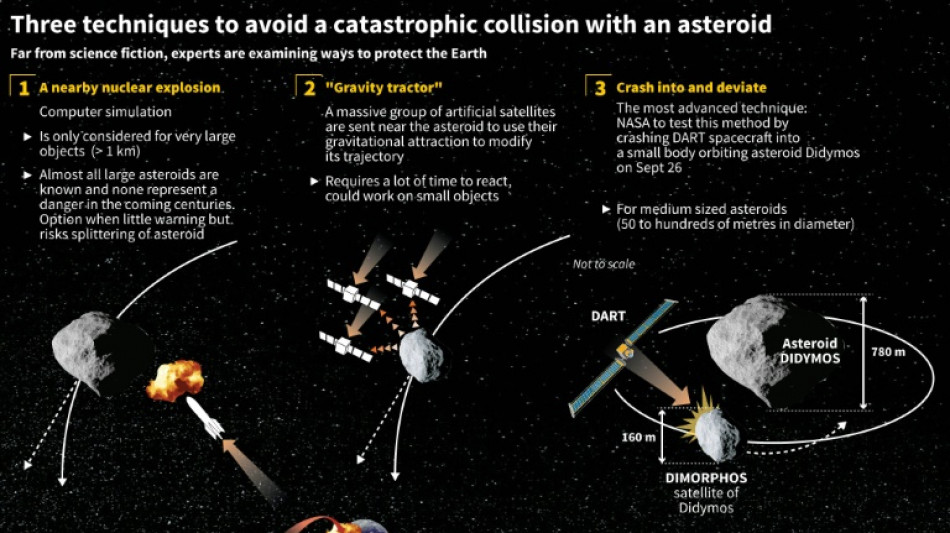
-
 Five-goal Fenerbahce rally past Feyenoord, Rangers to meet Club Brugge
Five-goal Fenerbahce rally past Feyenoord, Rangers to meet Club Brugge
-
US judge orders humane conditions for migrant detainees at NY site

-
 US indices power to fresh records after benign inflation data
US indices power to fresh records after benign inflation data
-
S. Korea's ex-first lady Kim arrested: prosecutors

-
 Alcaraz defies sweltering conditions in Cincinnati win
Alcaraz defies sweltering conditions in Cincinnati win
-
No.1 Scheffler gets new fill-in caddie for PGA playoff event

-
 Perplexity AI offers Google $34.5 bn for Chrome browser
Perplexity AI offers Google $34.5 bn for Chrome browser
-
Seales leads West Indies to ODI series victory over Pakistan

-
 Richardson apologizes to Coleman, speaks about domestic violence arrest
Richardson apologizes to Coleman, speaks about domestic violence arrest
-
Three killed in European wildfires as heatwave intensifies
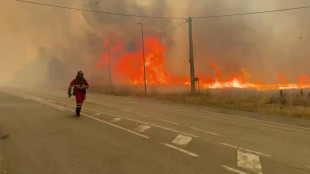
-
 PSG coach Luis Enrique wants 'different profile' to Donnarumma
PSG coach Luis Enrique wants 'different profile' to Donnarumma
-
Domestic violence charges dropped against boxing champ Davis

-
 US offers $5 mn reward for arrest of Haitian gang leader
US offers $5 mn reward for arrest of Haitian gang leader
-
Gauff advances into Cincinnati fourth round with a walkover

-
 US summit in Alaska a 'personal victory' for Putin, Zelensky says
US summit in Alaska a 'personal victory' for Putin, Zelensky says
-
MLB playoffs to start Sept. 30, World Series opener Oct. 24

-
 White House to host cage fight on July 4: UFC boss
White House to host cage fight on July 4: UFC boss
-
Netanyahu floats 'allowing' Palestinians out of Gaza as mediators renew truce push

-
 Olympic medalist Kerley provisionally suspended for whereabouts failure
Olympic medalist Kerley provisionally suspended for whereabouts failure
-
Morata joins Serie A side Como on loan

-
 Zelensky says US summit in Alaska a 'personal victory' for Putin
Zelensky says US summit in Alaska a 'personal victory' for Putin
-
US denounces Europe on speech in pared-down rights report
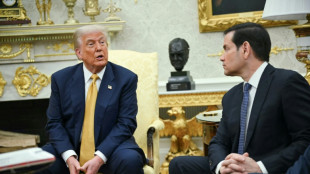
-
 NBA's 80th season tips off with Rockets at Thunder on October 21
NBA's 80th season tips off with Rockets at Thunder on October 21
-
Duplantis sets new pole vault world record of 6.29m

-
 Disgraced crypto mogul Do Kwon changes plea to guilty in US court
Disgraced crypto mogul Do Kwon changes plea to guilty in US court
-
Frank confident Spurs will be 'incredibly competitive' against PSG

-
 Gaza mediators 'working very hard' to revive truce plan: Egypt
Gaza mediators 'working very hard' to revive truce plan: Egypt
-
Man City's Grealish joins Everton on season-long loan

-
 Ukraine says fighting 'difficult' after reports of Russia's rapid gains
Ukraine says fighting 'difficult' after reports of Russia's rapid gains
-
US consumer inflation holds steady but tariff risks persist

-
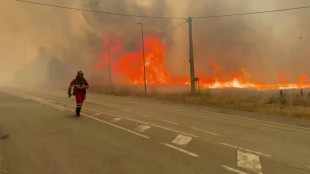 Two killed in European wildfires as heatwave intensifies
Two killed in European wildfires as heatwave intensifies
-
S.Africa to offer US new deal to avoid 30% tariff

-
 Gambia baby death heightens alarm over female genital mutilation
Gambia baby death heightens alarm over female genital mutilation
-
Soldier dies battling Montenegro wildfire

-
 Last Liverpool goal had special meaning for Jota
Last Liverpool goal had special meaning for Jota
-
Mixed crews introduced for 2027 America's Cup

-
 Stocks rise on restrained US inflation
Stocks rise on restrained US inflation
-
US consumer inflation holds steady but tariff worries persist

-
 Brevis smashes record ton as South Africa level T20 series
Brevis smashes record ton as South Africa level T20 series
-
EU ready to do plastic pollution deal 'but not at any cost'

-
 China Evergrande Group says to delist from Hong Kong
China Evergrande Group says to delist from Hong Kong
-
In China's factory heartland, warehouses weather Trump tariffs

-
 Palace claim sporting merit 'meaningless' after Europa League demotion
Palace claim sporting merit 'meaningless' after Europa League demotion
-
Former Premier League referee Coote given eight-week ban over Klopp comments

-
 Council of Europe cautions on weapon sales to Israel
Council of Europe cautions on weapon sales to Israel
-
The Elders group of global leaders warns of Gaza 'genocide'

-
 Stocks gain on China-US truce, before key inflation data
Stocks gain on China-US truce, before key inflation data
-
Man killed in Spain wildfire as European heatwave intensifies
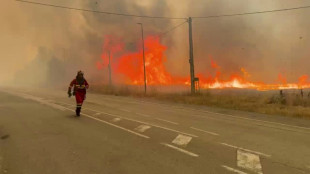
-
 US, China extend tariff truce for 90 days
US, China extend tariff truce for 90 days
-
Families mourn 40 years since deadly Japan Airlines crash

| RBGPF | 0% | 73.08 | $ | |
| RYCEF | 3.11% | 14.8 | $ | |
| CMSC | 0.09% | 23.08 | $ | |
| SCU | 0% | 12.72 | $ | |
| NGG | -1.35% | 70.28 | $ | |
| RELX | -0.44% | 47.83 | $ | |
| GSK | 1.33% | 38.22 | $ | |
| SCS | 1.42% | 16.19 | $ | |
| BP | 0.35% | 34.07 | $ | |
| BCC | 4.18% | 84.26 | $ | |
| VOD | 0.26% | 11.54 | $ | |
| CMSD | -0.05% | 23.56 | $ | |
| RIO | 1.52% | 63.1 | $ | |
| BTI | -0.71% | 57.92 | $ | |
| JRI | -0.07% | 13.38 | $ | |
| AZN | 1.69% | 75.34 | $ | |
| BCE | 0.61% | 24.5 | $ |

Direct impact or nuclear weapons? How to save Earth from an asteroid
NASA's DART mission to test deflecting an asteroid using "kinetic impact" with a spaceship is just one way to defend planet Earth from an approaching object -- and for now, the only method possible with current technology.
The operation is like playing billiards in space, using Newton's laws of motion to guide us.
If an asteroid threat to Earth were real, a mission might need to be launched a year or two in advance to take on a small asteroid, or decades ahead of projected impact for larger objects hundreds of kilometers in diameter that could prove catastrophic to the planet.
Or, a larger object might require hits with multiple spacecraft.
"This demonstration will start to add tools to our toolbox of methods that could be used in the future," said Lindley Johnson, NASA's planetary defense office, in a recent briefing.
Other proposed ideas have included a futuristic-sounding "gravity tractor," or a mission to blow up the hypothetical object with a nuclear weapon -- the method preferred by Hollywood.
- Gravity tractor -
Should an approaching object be detected early -- years or decades before it would hit Earth -- a spaceship could be sent to fly alongside it for long enough to divert its path via using the ship's gravitational pull, creating a so-called gravity tractor.
This method "has the virtue that the method of moving the asteroid is totally well understood -- it's gravity and we know how gravity works," Tom Statler, a DART program scientist at NASA said at a briefing last November when DART launched.
The mass of the spacecraft however would be a limiting factor -- and gravity tractors would be less effective for asteroids more than 500 meters in diameter, which are the very ones that pose the greatest threat.
In a 2017 paper, NASA engineers proposed a way to overcome this snag: by having the spacecraft scoop material from the asteroid to enhance its own mass, and thus, gravity.
But none of these concepts have been tried, and would need decades to build, launch and test.
- Nuclear detonation -
Another option: launching nuclear explosives to redirect or destroy an asteroid.
"This may be the only strategy that would be effective for the largest and most dangerous 'planet-killer' asteroids (more than one kilometer in diameter)," a NASA article on the subject says, adding such a strike might be useful as a "last resort" in case the other methods fail.
But these weapons are geopolitically controversial and technically banned from use in outer space.
Lori Glaze, NASA's planetary science division director said in a 2021 briefing that the agency believed the best way to deploy the weapons would be at a distance from an asteroid, in order to impart force on the object without blowing it into smaller pieces that could then multiply the threat to Earth.
A 2018 paper published in the "Journal of Experimental and Theoretical Physics" by Russian scientists looked at the direct detonation scenario.
E. Yu. Aristova and colleagues built miniature asteroid models and blasted them with lasers. Their experiments showed that blowing up a 200-meter asteroid would require a bomb 200 times as powerful as the one that exploded over Hiroshima in 1945.
They also said it would be most effective to drill into the asteroid, bury the bomb, then blow it up -- just like in the movie Armageddon.
H.Darwish--SF-PST




